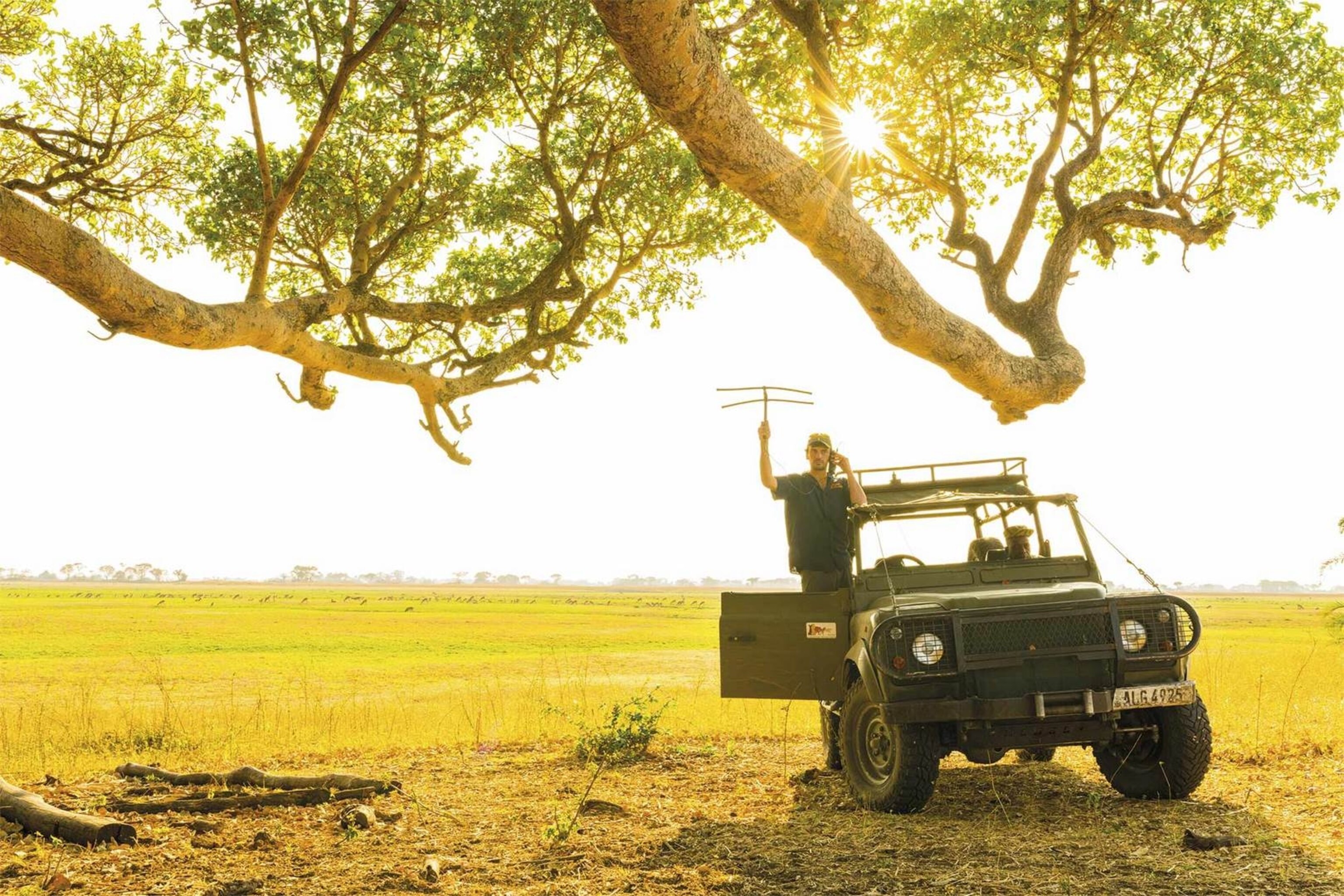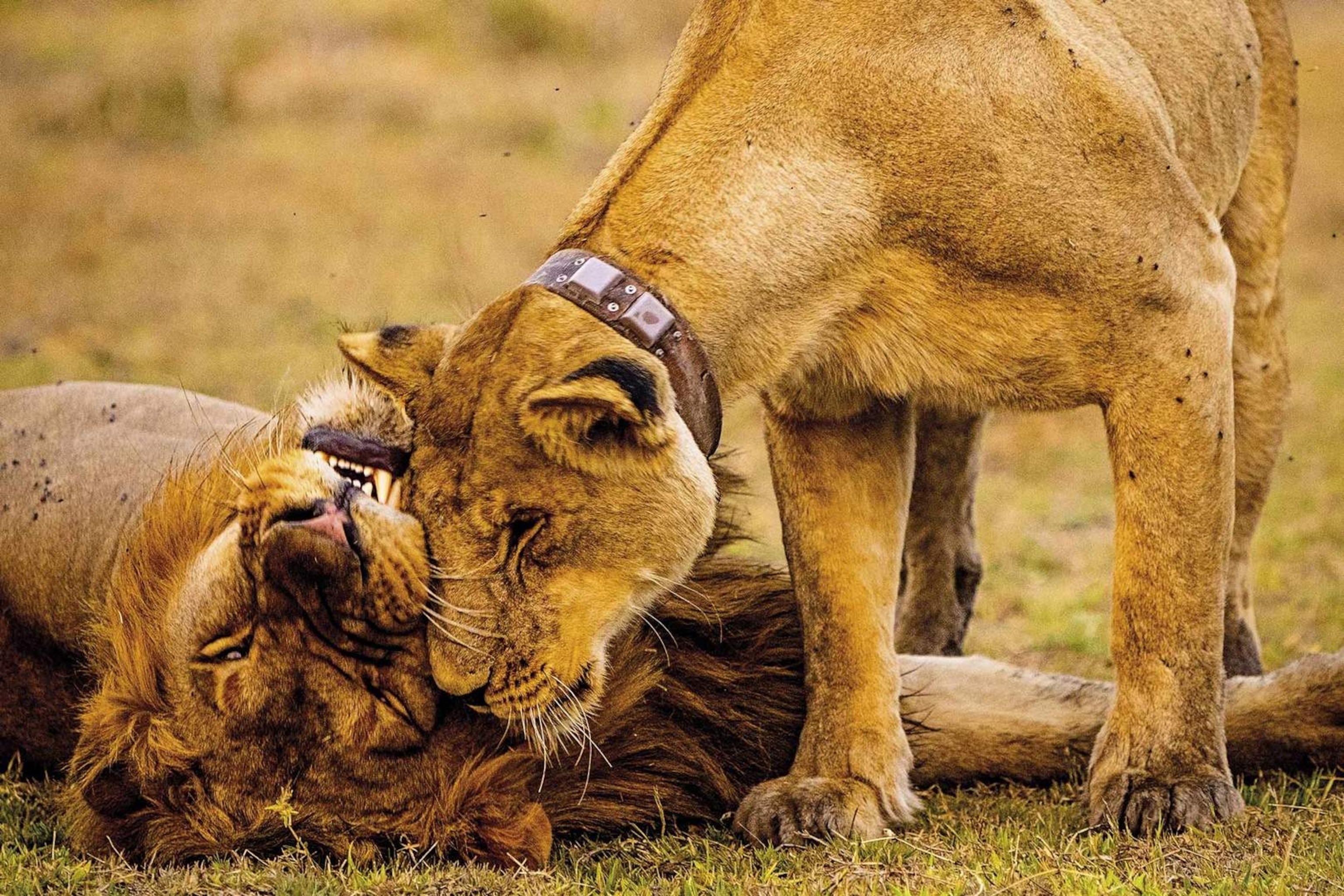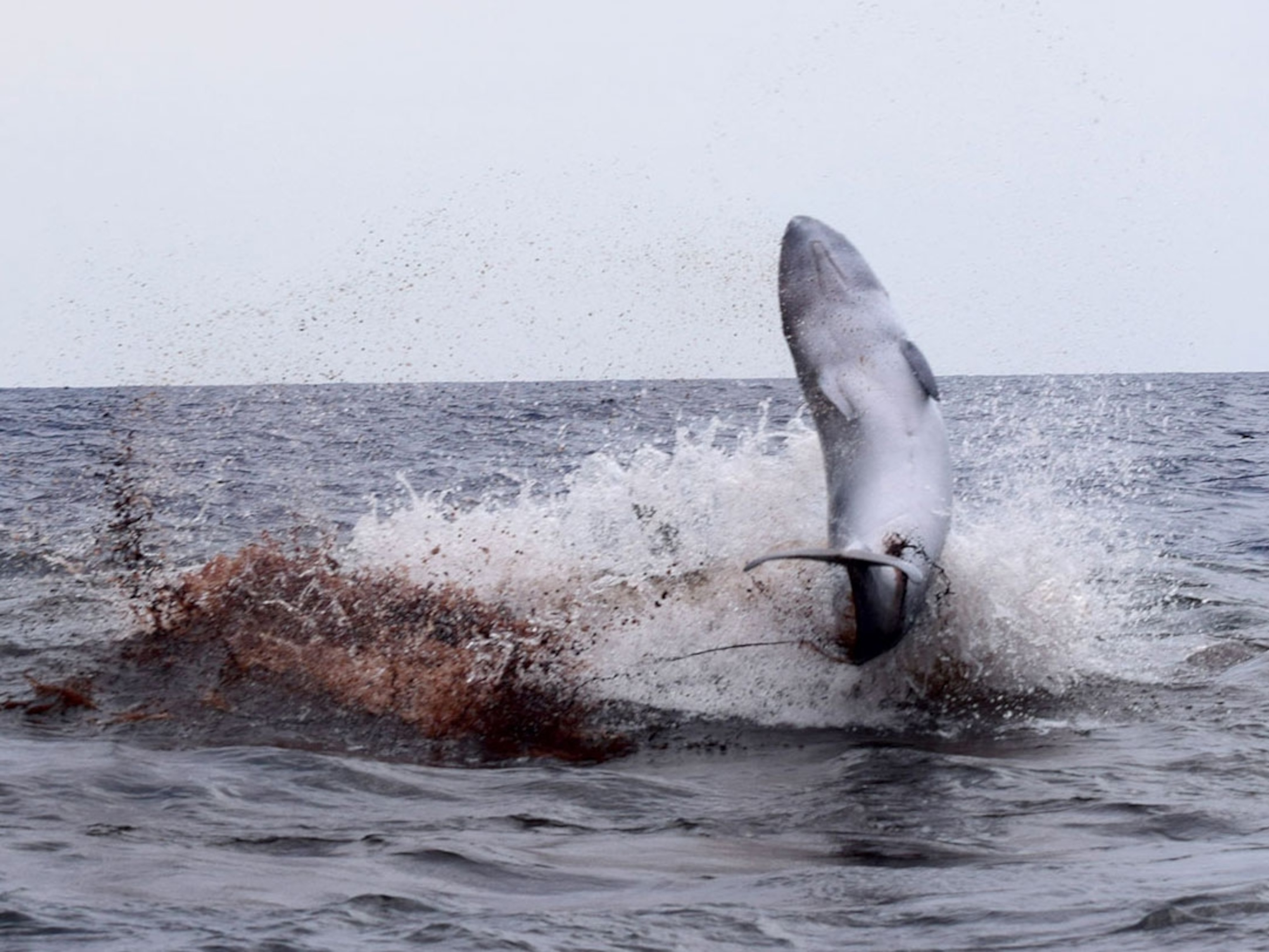
“That beautiful, gentle movement of a hot air balloon gives you wonderful opportunities to witness animals undisturbed by your presence,” explains Shannon. “This was a really special experience for me: mind-blowing.”
From the air, the vast expanse of the Greater Kafue Ecosystem is brought into focus.
Zambia’s largest and oldest national park covers 8,650 square miles of swaying golden savannahs, seasonal floodplains and lush forests. Such diverse, untamed space makes Kafue a magnet for wildlife, but also provides the park’s biggest challenge: how to protect vulnerable species in a region bigger than Wales.
“This ecosystem supports large numbers of predators including lions, wild dogs and cheetahs, providing the continuous expanse of unfragmented, protected land these carnivores need to thrive,” says Shannon. “Kafue’s a massive park and even in an open area, they’re perfectly camouflaged.”


Despite this, these animals have to navigate threats from snares, poaching, human conflict and disease so gathering data on their movements and behaviour is essential for their survival.
“The Zambian Carnivore Programme (ZCP) monitors Kafue’s large carnivores using advanced satellite tracking collars funded by Gemfields,” explains Shannon.
The data extracted from the collars means that if an animal is snared, sick or heading for a potentially deadly human encounter, the ZCP team can work with the Zambian Department of Wildlife to swiftly locate the animal and assist.
“ZCP contributes life-saving research about these predators,” says Shannon. “They’re all social to a degree, so by fitting just one animal with a collar, the team can follow and extrapolate information on the whole group. It’s opened up a new window on their world.”





